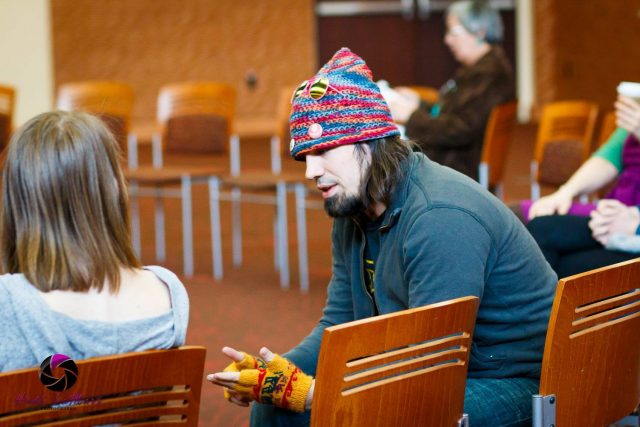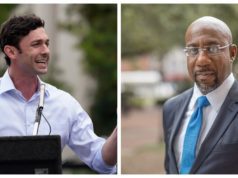This piece was produced by a student reporter in the Madison365 Academy. To learn more or support our education programs, visit madison365.org/academy.
 Garrett Lee started out as a researcher in stem cell biology, and is now an activist for “better human life.” Lee is the founder of WHOA! – We Help One Another – an ambitious nonprofit organization focused on social change, to realize a world where well-being is at the center. His knowledge of the cell and its biology fueled his energy for transforming the way we live.
Garrett Lee started out as a researcher in stem cell biology, and is now an activist for “better human life.” Lee is the founder of WHOA! – We Help One Another – an ambitious nonprofit organization focused on social change, to realize a world where well-being is at the center. His knowledge of the cell and its biology fueled his energy for transforming the way we live.
“I’ve decided to take what I had in my head and align it with my heart, my passion for social justice,” he says. Lee likens social wellbeing to the cell: you have the internal and external structures of a cell. If something is wrong with the internal structure then the external structure will not be efficient. Humans are the internal structure and society is the external, humans are the actors for the complex system of the world. Essentially, if we as people have the wrong morals and selfish priorities, then society isn’t going to run smoothly.
The goal of WHOA! is “to find a solution that must get to the bottom of social and economic system problems.” Something like this doesn’t happen overnight. It is also not a one-man job; for something like WHOA! to be successful, people need to see the bigger picture, Lee says. They need to see the long term outcomes.
Lee describes himself as “a big picture thinker,” and sees the organization as something that will go beyond himself to change the way we live. “It requires root cause analysis, which my scientific training helps out with immensely. Once you can identify what’s at the root of the problem then you need to have a positive frame,” Lee says.
One of the ultimate goals of this organization is to build shelter; which is a literal and tangible goal but also, Lee says, “an acronym – shelter, health, education, love, technology, expression, and recreation – and is sort of redefining what shelter can be. The long term vision… imagine a community building that’s in the language of the built environment, that colocalizes all these basic human needs into one geographic place.” The idea of the shelter is to resemble a campus; everything would be in walking distance and offer all the facilities a person needs, and for all ages.
Lee envisions a campus with its own school of sorts, including classes and educational experiences for those no longer of school age.
“For example, the Real Life Library,” he says, referring to a program in partnership with the Madison Public Library that allows you to “check out” a person and learn directly from them. “That’s education,” Lee says. “Listening to people is one of the best ways to learn, and you can learn so much about life through hearing someone else’s story.” A goal farther down the road is to provide transportation to schools and libraries, so people who are already enrolled don’t need to attend the ones on the built campus.
Lee admits this shelter is still a relatively vague idea in his mind. “It requires a lot of financial capital and we’re a young organization,” he says. “There aren’t blueprints for this design.”
In the meantime, Lee has developed a social connection platform called GoodPoint.
“Our ‘why’ is to create a world that’s centered on well being and values well being. Then the ‘how’ is GoodPoint, that’s the platform,” Lee says. “Then the ‘what’ are these practices, designed experiences that are rooted in positive social connection. The Real Life Library is storytelling and listening. The Thank You Card Campaign is recognition of appreciation of some quality of a person and being seen that way; it’s connecting through gratitude, that’s a win-win. The Choose Your Own ADD-Venture, that’s collaboration, making decisions together, engaging your community. All of these have built into them positive social connections and that’s sort of the root of what we want people to value.”
Goodpoint, the “how” of Lee’s vision, is basically a gamification of social interactions, with rewards and points for making connections. Lee has an undergraduate degree in neurobiology and understands the motivation and reward circuitry within your brain. You get positive reinforcement of behaviors when you tie rewards to them. Lee thinks of GoodPoint as a sort of currency which effectively is our economic reward system; you give your labor then you get your money and then your money gives you access to what you want; “what if we rethought that to have the root value be well being, so those positive and social connections become the root of the value… and it changes the economics.”
WHOA is accepting donations at its website.




























